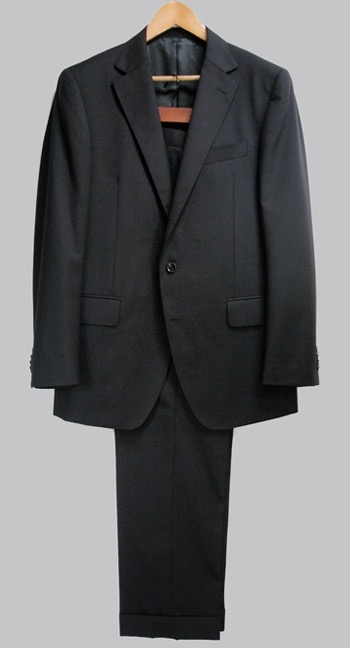1.Prologue: Behind the Scenes
On this episode we talked about daily social media traditions—specifically hashtags pertaining to each day of the week.
For the first time, I was tasked with using what the Japanese call a “flip board" or “flip"—basically a foam board used to present charts, graphics, or other information to viewers—to list off some of those hashtags to our MC and sidekick Hide-san. In a previous episode of our show Hide-san had also used a “flip" to entertaining effect, presenting a chart of the most-followed Twitter users. I was taken in by how Hide-san did more than just read the chart—how he used pauses and slipped in a helpful comment here and there to turn what could have been a bland chart into something exciting. It was like being mesmerized by the hand movements of a magician. Side note, at NHK they apparently refer to “flips" as “patterns". Don’t ask me why.
The whole culture of using something as analog as a foam board to present something to an audience—gradually peeling back pieces of tape that are covering up keywords and key images—is in my experience utterly unique to Japanese TV. In the U.S. or Europe computer graphics are the norm, and physical props can often come across as amateurish. But on Japanese TV they are used everywhere, from news programs to “wideshows" (the Japanese television equivalent of a weekly) to variety shows. (“Wideshows" are format also completely unique to Japanese television—a topic for another day.
How did the use of “flips" become so prevalent on Japanese TV? The first thing that comes to mind is the strong preference the Japanese tend to have for analog over digital. As a rule, when the Japanese find a way of doing things that works for them, they prefer to stick to it for as long as they can. Perhaps this is because Japan is a country with a long history of passing down traditional craft techniques from generation to generation. This is why in this day and age—the peak smartphone era—you can still see middle-aged salarymen clinging onto their “flip" phones.
Interestingly, while the Japanese love their primitive analog tools and methods, they are also putting a lot of resources into 4K and 8K ultra high-definition television broadcasts. And of course, the Japanese as a whole are obsessed with staying on top of the latest trends when it comes to smartphones and home appliances. In the end it is a country with world-class 3D animation technology that also highly values its culture of 2D comics. Given that, perhaps the practice of using “flip boards" is an important tradition of Japanese TV culture.
Going back to my first “flip board" experience—let’s just say there was plenty of room for improvement. There were so many things to think about—when the right timing was to bring out the board, what position I should hold it to make it visible both to our MC and to the cameras, how I should gesture to the board with my finger, and how to make the information exciting. It was more difficult than I anticipated. And it didn’t help that I have a tendency to overcomplicate things—but it certainly made me more aware of this character flaw. I took solace in the fact that the segment made it to air, with all of my awkwardness left on the cutting room floor. My sincere thanks to our wonderful staff and crew.
2.Hashtags for Each Day of the Week
As humans we love to give significance to our everyday existence by assigning a theme and making each day about something. Americans especially have the admirable quality of trying to find enjoyment in the little things. On social media one of the barriers to entry is not knowing what to post about, and that’s where hashtags for each day of the week come in—they lower the bar with relatable themes that just about anybody can participate in. Even today, they continue to show up in one form or another as a trending topic practically every day of the week.
Our main topic for this episode was #ThrowbackThursday, and we also talked about other hashtags for the other days of the week, but here are some we didn’t have time to mention on the show:
#ManCrushMonday
Where users (both men and women) post pictures of their man crushes on Monday
#TravelTuesday
Where users post pictures from their travels on Tuesday
#WomanCrushWednesday
Where users (both women and men) post pictures of their woman crushes on Monday
#ThursdayThoughts
Where people post reflections and spiritual thoughts on Thursday as they head into the end of the week
#TGIF (Thank God It’s Friday)
The Japanese equivalent is “hana-kin" (hana means flower, and kin is short for kinyoubi, or Friday)
#Caturday
Where people post pictures of their cats on Saturday
#ShakespeareSunday
Where people post their favorite Shakespeare quotes on Sunday
Looking at some of these hashtags, there is something that many of them have in common: they consist of two words that begin in the same letter (or sound). Man Crush Monday. Travel Tuesday. Woman Crush Wednesday. Thursday Thoughts. Shakespeare Sunday. This is a literary device known as alliteration.
For example, if you wanted to describe our MC Kato-san using an adjective, Beautiful Kato doesn’t pack the same punch as Knockout Kato. If we were talking about Kato-san’s sidekick Gori-san, Super Gori doesn’t have quite the same ring to it as Great Gori; with Hide-san, Funny Hide doesn’t roll off the tongue like Hilarious Hide does.
3.My Wardrobe This Week
Keeping in line with the theme of our show for this week, here are some general tips for simple things you can do everyday to keep your clothes in good condition.
Suits: when you get home, make sure to take a proper brush to your suit to clean off any dust that has accumulated on over the course of the day. Then hang it up in a well-ventilated place to dry it out, making sure to take out any and all objects you’ve put in your pockets, as they can ruin the shape and drape of your suit. (Side note, a suit always looks better when worn with nothing in the outside pockets.) And instead of draping your trousers over a hanger, use a hanger with clips to hang them upside-down—letting gravity and the weight of the trousers themselves to straighten out any wrinkles. As for dry cleaning, you should take your suit to the cleaners once a season—or more, depending on how much you sweat. Keep in mind that each trip to the cleaners is a strain on your suit.
Shirts: wash them as soon as possible after wearing, or take them to the cleaners. (For high-quality shirts, I recommend paying the 300+ yen to have them washed, rather than the 100 yen dry cleaning option.) To protect the sensitive fabric, reverse the shirt and place it in a laundry net—this will protect the buttons from getting nicked by the inside of your washer. I also recommend folding your shirt before putting it into a laundry net—it goes a long way toward preventing unseemly wrinkles.
Shoes: brush after every wear, and dry with shoe tree inside. There are those who say you should let the shoes dry without shoe trees, but I recommend using them to help smooth out wrinkles that have accumulated over they day. It’s also important to remember that it is also not healthy for leather to be dried out. By using a wooden shoe tree, you can help your leather retain just the right amount of moisture. (Recently I’ve seen a wide selection of wooden shoe trees available online at reasonable prices.) And one last thing—never, ever wear the same pair of shoes two days in a row.
Black loafers by Paraboot

When I purchased a pair of brown Timberland slip-ons a couple of years ago, I went for a fit that felt just right. As I broke in the leather, however, the shoes gradually became looser than I’d imagined. Having learned my lesson, I bought these loafers in a size that felt slightly snug, and wore them around my apartment for a while before deciding it was the right time to wear them on the show.
Lately, I see many guys wearing their leather shoes without socks (or using barely-there socks that are completely covered by the shoe). Personally, I’m a sock-wearing king of guy. Loafers are not so much a way to show off my ankles as they are a way to show off my socks.
Side note, loafers come in a variety of different types and materials, including suede and thin-soled variants referred to as “driving shoes". On the whole, loafers are a casual shoe, meant for a lifestyle where you get around by car. They’re not exactly made for walking.
These Paraboot loafers, however, have a thick rubber sole that makes them suitable for any occasions where you have to spend some time on your feet.
Light gray super soft jacket by Brooks Brothers

Pink button-down shirt by Difference

Red socks by Tabio
4.Epilogue: A Song for Every Day of the Week
Today I’d like to finish with a list of songs I’ve chosen for each day of the week, based on no particular criteria other than my own personal taste.
●Commodores – “Easy"
This ballad is one of the Commodores most iconic songs, released during their Lionel Richie-led heyday. At this point you can tell that Richie’s voice has yet to reach its full potential, but it’s also clear that this song would pave the way for his later solo hits and general ballad-oriented direction. It’s important to remember that Sunday means something specific for a devout Christian, but even us heathens would like to spend an easygoing Sunday morning. Highly recommended.
●The Mamas and the Papas – “Monday Monday"
This Grammy-award winning song comes from an American folk group from the 1960s. Two lovers who have just spent the weekend together are faced with the reality that they do not know what Monday will mean for their relationship.
●The Rolling Stones – “Ruby Tuesday"
This ballad was mostly written by guitarist Keith Richards after he was dumped by his girlfriend, who had fallen for a then-unknown Jimi Hendrix while the Stones were on a tour of the U.S.
●Simon and Garfunkel – “Wednesday Morning, 3 A.M."
This is the name of the album and the title track to their debut album, which features the original acoustic version of “Sounds of Silence". It is the surreal song of a robber looking lovingly upon the face of his sleeping lover as he laments the coming of the morning. Folk music tends to have very interesting lyrics, so I recommend checking out the lyrics to this one.
●Brian Eno – “Thursday Afternoon"
This album consists of one single hourlong ambient track, which took full advantage of the CD format—which at the time had just been developed. Perfect background music for when you want to focus and get enough work done on Thursday so you can finish up early on Friday. Try it—you’ll be amazed at the results.
●Johnny Kemp – “Just Got Paid"
This early New Jack Swing hit was produced by Teddy Riley (who most Japanese readers will know as the producer of Michael Jackson’s Dangerous album). Everybody’s been there—that Friday feeling of having just been paid, ready to paint the town red and dance until dawn with your friends.
●Cherrelle featuring Alexander O’Neal – “Saturday Love"
An R&B love song produced by Jimmy Jam & Terry Lewis, the production duo behind many of Janet Jackson’s biggest hits. With a simple chorus consisting of Cherrelle and O’Neal singing the days of the week, the song is admittedly a little cheesy, but you won’t be able keep yourself from singing along.











